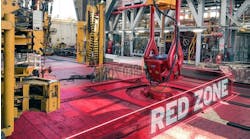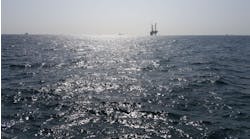Well flow performance
At least 80% of a well's production flow or a hydrocarbon reservoir's cumulative production performance is dictated by two critical factors: the permeability and porosity of the unadulterated reservoir sand or rock, and interface (skin effects, induced fractures, and packing) between the wellbore and surrounding reservoir. The remaining 20% results from unrelated completion and production equipment factors.
Only in the past five years has the petroleum industry been able to make headway in flow performance by characterizing reservoir media before the wells are drilled, and preventing formation face damage during the drilling process.
Previously, wellbore construction was driven entirely by safety (pressure containment) and efficiency (rate of penetration) factors. The development of skin effects was a nuisance, but there was always multi-well high-pressure fracturing and injection wells to bail out under-performing wells and reservoirs.
Today, with discovery wells tapping smaller hydrocarbon pools, that luxury has disappeared. The cost of one development well is the difference in prospect commerciality. Boosting individual well flow performance is the key, and researchers are beginning to make an impact in this area.
- Flow within and from the reservoir is becoming a major consideration in early geoscience investigation. Reservoir size is academic, if permeability isn't there. Geoscientists are better able to assess reservoir physical and chemical characteristics using acoustic data alone. By the time the drill bit penetrates the formation, there is substantial certainty about flow performance.
- Wellbore formation damage soon could become a minor event. Minimally invasive drilling techniques, including under-balanced drilling, are being aided by the ability to anticipate and monitor downhole pressures and circulating densities.
Poor reservoir characterization and formation damage control result in costly treatment and intervention programs after production has started - a process that destroys field (and sometimes company) financial results. As a result, flow management determines everything in oil and gas recovery, and reservoir engineers are having much more influence on prospect evaluation.
Artificial recharge
The 40-60% volume of crude oil left behind in the reservoir becomes more important as new oil discovery volumes diminish in size. Efforts to capture the reserves left behind have failed to score major achievements because the investment required for additional wells, lift and flood methods, injected liquids and gases, workovers, lateral kickouts, and other measures often don't allow a sufficient return.
There are research efforts underway to enhance reservoir recovery, but most continue to focus on chemical and mechanical intervention. Relief, instead, may come from an unexpected area - gene-manipulated bacteria.
Bacterial consumption of oil in the reservoir produces gas sufficient to recharge the reservoir, but the time required for the bacterial colony to expand to the necessary size and penetration is not practical. We already know that oil-consuming bacteria can withstand high heat and pressure conditions. The challenge is to drastically speed up colony growth and gas production capability - and this is where gene manipulation could provide some answers.
Do we have the right organisms now? Probably, but they need help in the production of an immiscible gas with surfactant qualities - a real tall order for researchers. In creating such altered bacterial forms, there are concerns with introducing such a species into the surface environment. Practically, the wellhead treatment and refining processes can be set up to kill unwanted species.
When natural flow conditions are no longer viable for the field, then gene-altered bacteria could be introduced into the reservoir by injecting colonies through the original producing wells. If injection wells exist, then the process becomes easier.
By injecting a solvent chaser to prevent solidification of hydrocarbons near the wellbore, the wells can be suspended indefinitely. Well bottom pressure is monitored periodically. When recharge pressure is reached, laterals can tap the left-behind reserves at the right locations. If the cost of bacterial gene-manipulation can be brought down to reasonable levels, the process could become highly effective in reserve recovery.
Readers wishing to respond to issues presented on this page or elsewhere in Offshore, or offer authored articles or article suggestions, should contact the editor by E-mail ([email protected]) or Fax (1-713-963-6296).


